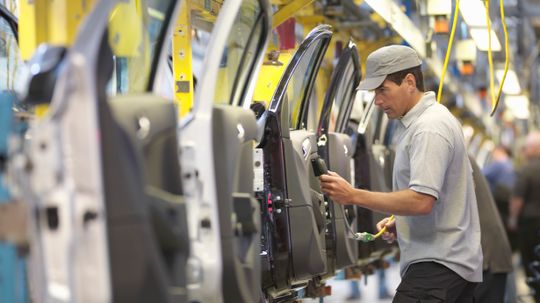Revolutionizing the Manufacturing Process: The Birth of the Assembly Line
A Paradigm Shift in Industrial Production
In a world where efficiency and productivity are paramount, one cannot overlook the monumental impact of the assembly line. This groundbreaking invention transformed manufacturing processes forever, allowing for mass production on an unprecedented scale. However, behind this revolutionary concept lies a fascinating history that often goes unnoticed.
The Origins: Eli Whitney’s Interchangeable Parts System
While many credit Henry Ford with inventing the assembly line, it is essential to acknowledge its precursors. In fact, as early as 1798, American inventor Eli Whitney introduced his interchangeable parts system during his work on firearms production. By standardizing components and creating machines capable of producing identical parts with precision, Whitney laid down the foundation for what would later become known as the assembly line.
Ford’s Innovations: Streamlining Mass Production Processes
Fast forward to 1913 when Henry Ford revolutionized industrial production by implementing his version of the assembly line at his Highland Park plant in Michigan. By breaking down complex tasks into simpler ones and assigning specialized workers to each station along a moving conveyor belt, Ford drastically reduced manufacturing time while increasing output exponentially.
The Impact on Society and Industry
Social Implications: A Double-Edged Sword?
The advent of assembly lines brought about significant societal changes. On one hand, it led to lower prices for consumer goods due to increased efficiency and reduced labor costs. This accessibility allowed more people from various socioeconomic backgrounds to afford products they previously could only dream of owning.
On the other hand, critics argue that this new mode of production dehumanized workers by turning them into mere cogs in a machine. The monotonous and repetitive nature of assembly line work often led to physical and mental strain, resulting in decreased job satisfaction and potential health issues.
Conclusion
The invention of the assembly line marked a turning point in human history, forever changing the way goods are manufactured. While Eli Whitney laid the groundwork with his interchangeable parts system, it was Henry Ford who perfected this concept and brought it into mainstream industrial production. Despite its undeniable impact on society and industry, we must also acknowledge the challenges associated with this method of mass production. As we continue to advance technologically, let us strive for innovation that not only enhances efficiency but also prioritizes worker well-being.


